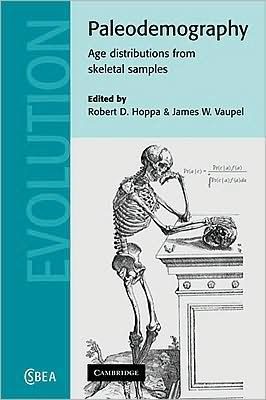Paleodemography: Age Distributions from Skeletal Samples
In this book, physical anthropologists, mathematical demographers, and statisticians tackle methodological issues for reconstructing demographic structure for skeletal samples. Topics discussed include how skeletal morphology is linked to chronological age, assessment of age from the skeleton, demographic models of mortality and their interpretation, and biostatistical approaches to age structure estimation from archaeological samples. This work will be of immense importance to anyone interested in paleodemography, including biological and physical anthropologists, demographers, geographers, evolutionary biologists, and statisticians.
1117320601
Paleodemography: Age Distributions from Skeletal Samples
In this book, physical anthropologists, mathematical demographers, and statisticians tackle methodological issues for reconstructing demographic structure for skeletal samples. Topics discussed include how skeletal morphology is linked to chronological age, assessment of age from the skeleton, demographic models of mortality and their interpretation, and biostatistical approaches to age structure estimation from archaeological samples. This work will be of immense importance to anyone interested in paleodemography, including biological and physical anthropologists, demographers, geographers, evolutionary biologists, and statisticians.
68.0
In Stock
5
1

Paleodemography: Age Distributions from Skeletal Samples
276
Paleodemography: Age Distributions from Skeletal Samples
276Paperback
$68.00
68.0
In Stock

Product Details
| ISBN-13: | 9780521089166 |
|---|---|
| Publisher: | Cambridge University Press |
| Publication date: | 10/30/2008 |
| Series: | Cambridge Studies in Biological and Evolutionary Anthropology , #31 |
| Pages: | 276 |
| Product dimensions: | 6.00(w) x 9.00(h) x 0.80(d) |
About the Author
From the B&N Reads Blog
